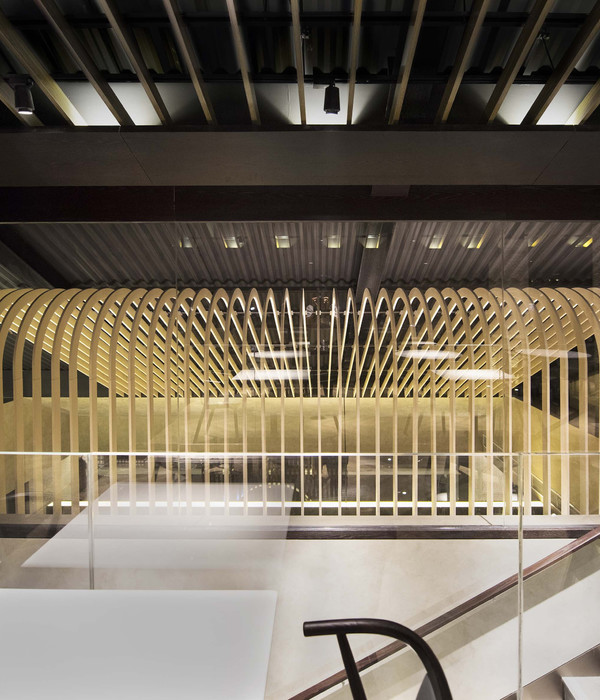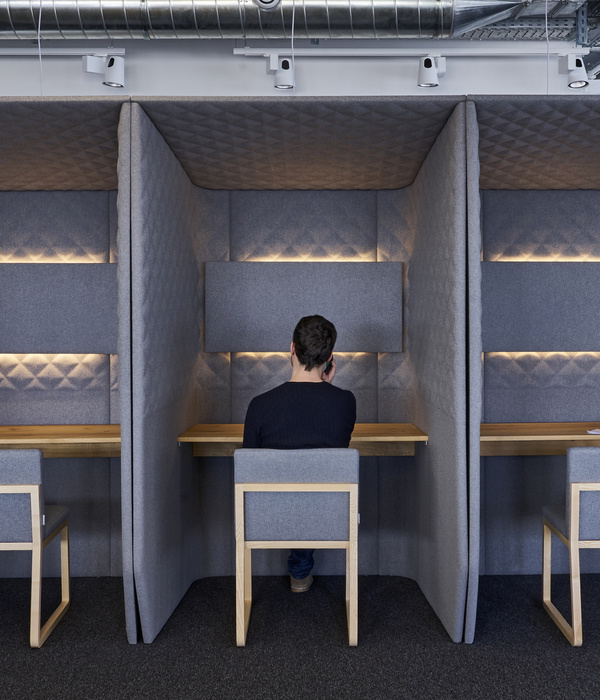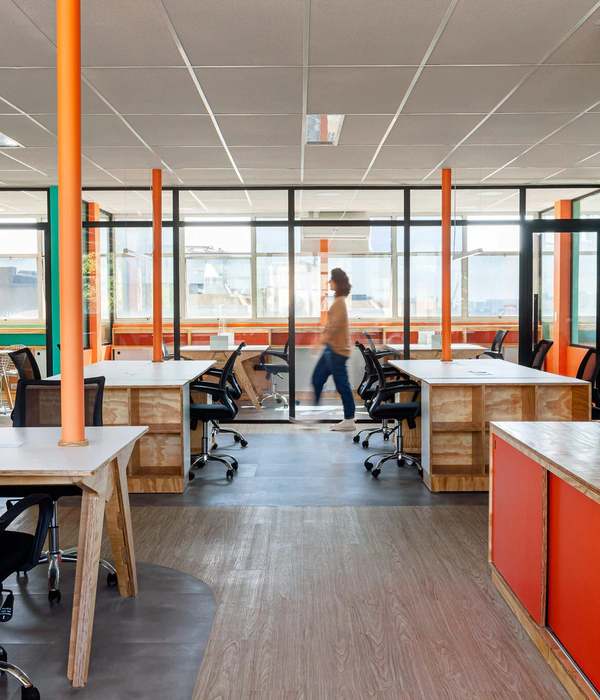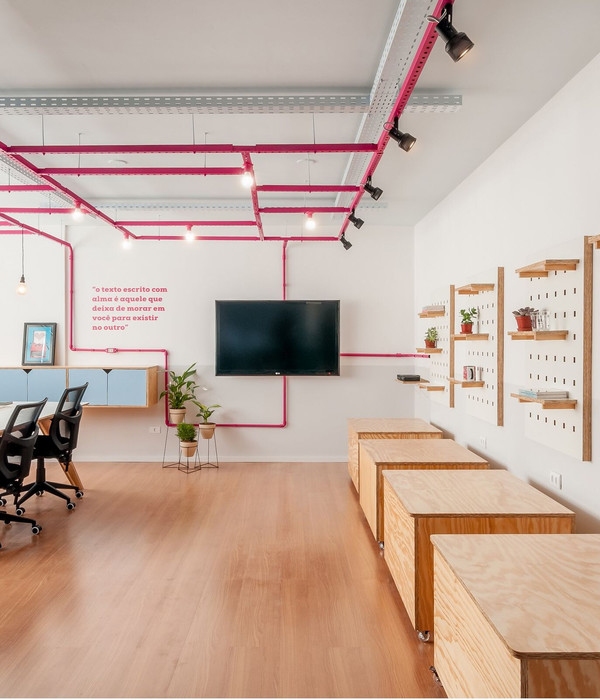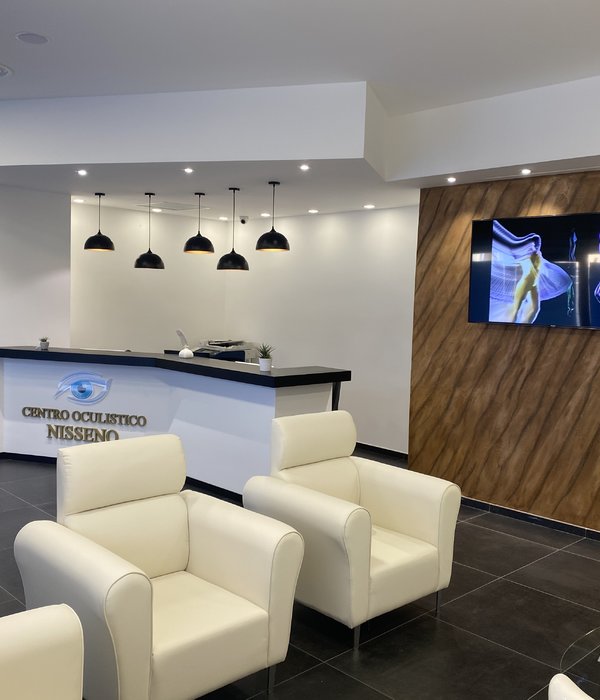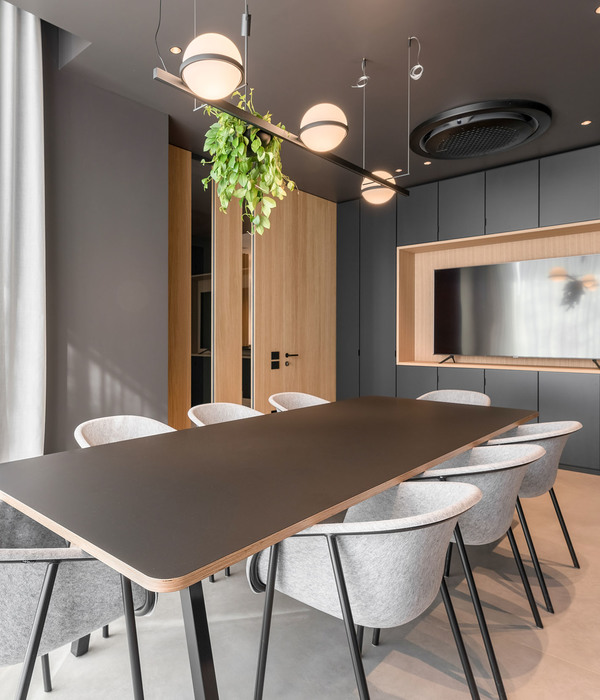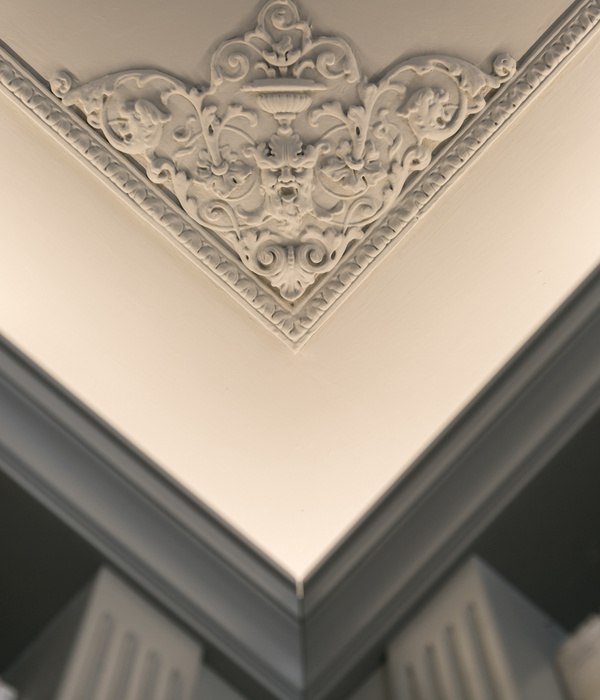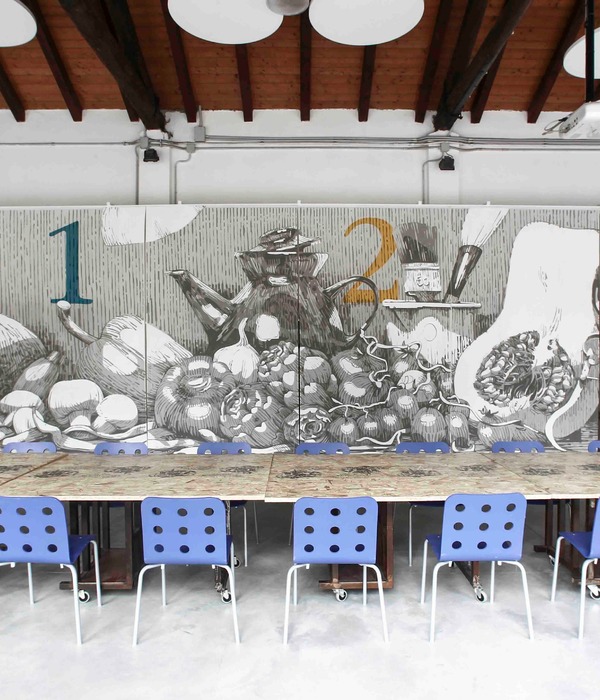Architectural and design firm Lemay, and lighting agency LumiGroup, have combined their expertise to transform a partially under-exploited sector of the Montreal Olympic Park into a bright, warm, and dynamic work environment. Continuing their long-term history of working together on major projects, the mandate was to set up offices which would bring together all the administrative and logistical departments of the Olympic Park in a single location in order to speed up decision-making.
Following the first visits and volumetric studies of the premises to be redeveloped (a vast elliptical space extending in length under the esplanade of the Olympic Stadium, bordered by a curtain wall on avenue Pierre-De Coubertin), several observations were noted which subsequently guided the design team throughout the project.
“At first glance, it was obvious that lighting would play a crucial role in the success of this project; the design of radial lighting emphasized the architecture of the place and its lighting,” explains Ramzi Bosha, Architect from Lemay. “And LumiGroup was a key player in realizing the lighting concept.”
The location of the future offices, setback several meters below the esplanade, was deprived of natural light, despite abundant windows. The place was dark, and the true ceiling height was unappreciated. On the other hand, the direct view of the street was interesting from a community perspective, and the existing and unique architecture was inspiring. The architects decided to capitalize on these assets by organically connecting the interior and exterior, and basing their layout on the important presence of the spoke structure connecting the curtain wall to the interior of the building to set the scene, enhance, and illuminate it.
The reception area includes enclosed glass meeting rooms, a hidden coatroom, and screens. If necessary, some white painted glass walls can be used as a blackboard during events or meetings. The original concrete floor was restored and re-polished. On some walls, wooden slats warm the space. Here, refurbished Lotus chairs are also rediscovered, designed for Artopex by Paul Boulva in anticipation of the 1976 Montreal Olympic Games. Overhanging recessed and suspended lighting evokes speed and movement.
“Designing partly recessed, partly suspended, lighting fixtures is a fantastic idea, but very complex to achieve because it involves the coordination of several trades and requires extreme precision,” adds Thomas-Martin Girard from LumiGroup.
The main space has been separated into zones, each housing a distinct sector of activity — financial and legal services, human resources, construction, etc. — and assigned one of the colors of the Park’s brand image, corresponding to those of the Olympic rings. The passage points between these areas have been completely painted – floor, walls, ceiling – and are lit by tone-on-tone LED strips. Entering a new area crosses its colorful entrance, and its vibration and energy are absorbed. Once inside the zone, the space regains a neutrality conducive to concentration. The colors call for movement — from one to another, they invite the user to move on to the next area.
Along the curtain wall, the spaces are open and more convivial, promoting collaboration, teamwork, and interactive activities. The further you move away from the windows, the more intimate and cozy the areas become, welcoming closed spaces, acoustic booths, and semi-closed collaboration corners. Even in more private workspaces, the client wanted to open the space as much as possible, which in turn required appropriate acoustic treatment. Therefore, a whole network of felt slats was installed high up, into which the shelf lighting was to be integrated. In the cafeteria, the same fixtures had to be integrated into the reflective white stretched canvas ceiling — another major challenge.
At the ends of the main area, the walls have been entirely covered in mirrors, creating the illusion of an infinitely expanded space. The effect is reminiscent of the project’s signature lighting fixtures, which are reflected on the windows of the curtain wall, giving the impression of flowing outwards from the space.
One of the architects’ fundamental ideas for this project was to translate the passionate work of the people of the Olympic Park out into the community, and the site itself featured a spoke structure. In partnership with LumiGroup, they were able to design lighting fixtures with a strong presence that multiplied throughout the space and unfolded as if in a wide beam.
Starting from the interior of the building, and stretching in a straight line to the curtain wall, the new lighting fixture in the main area merges with the existing organic structure, emphasizing and reinforcing its lines and form. From the outside, the lines of light catch passers-by, drawing their gaze inward.
“The project itself included unusual technical constraints linked to the concrete site, which moves according to temperature variations, particularly in winter, with the cold,” explains Thomas-Martin Girard, lighting advisor and partner at LumiGroup. “Resilient devices were needed, especially near the curtain wall. We had to develop a model of attachments allowing movement of a few centimeters. It was also necessary to design lighting fixtures that were partly recessed, partly suspended; a fantastic idea, but very complex to realize because it involves the coordination of several trades and requires extreme precision.”
To realize the vision of the team of architects, while respecting budgetary constraints, it was necessary to come up with innovative solutions. For example, all the old reusable lighting fixtures were integrated into closed spaces, less in view, reducing costs and waste and making it possible to go further with the busier open spaces. It was necessary to convince a manufacturer to modify its existing devices to make a “more or less tailor-made” version — a challenge that the LumiGroup team was able to meet.
“The people at LumiGroup are creative, meticulous, and not afraid to think outside the box,” concludes Nadine Chartouni. “In working together, we can be very creative, because they can look at things differently. They are great collaborators to succeed with bold ideas.”
Architecture: :
Lemay
Designer / Architect: Nadine Chartouni, Ramzi Bosha
Project managers: Audrey Lafrance, Marc-André Lemaire Perreault
Production team: Alejandro Mendoza, Éric Reyes Cano, France Lavigne
Site manager: Steve Lesieur
Lighting design collaborator: LumiGroup
Photos: Claude-Simon Langlois
{{item.text_origin}}


